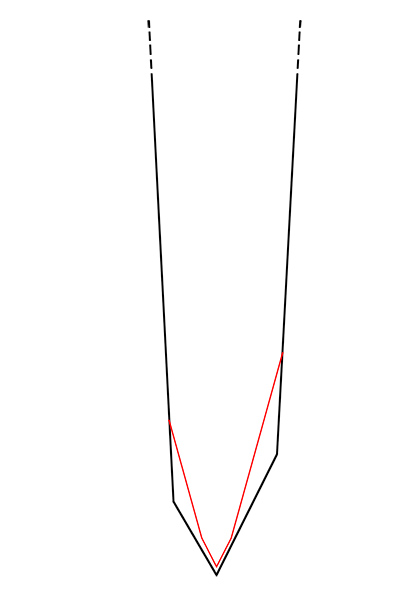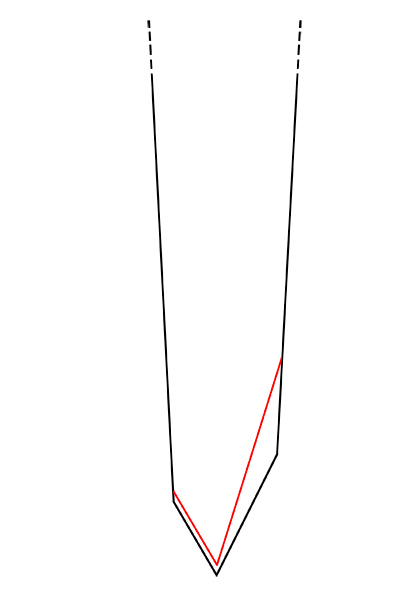rdpx
Senior Member
- Joined
- Jan 28, 2013
- Messages
- 361
- Reaction score
- 0
After a few days using the new Gyuto, I think it is nearly time to give it a proper edge.
Before I do so, I am posting a drawing of what I think I am supposed to be doing with it.
The knife is advertised as being 60/40 and it looks like it is something like that, but the angles of the bevels are probably 20-25*deg, though this is a rough guess.
What I am planning on doing is as shown in the drawing - regrinding the bevel at about 12-15*deg, and then putting a microbevel on that is similar to the angles that are there already [the red line].
What I would appreciate would be if you could tell me:
1. Does this look like I have correctly understood what needs to be done?
2. Is what I am planning on doing to the main bevel the same as "thinning" the blade?
3. Approx how many millimetres should I expect to be grinding back up the blade (ie. the distance between current beginning of edge, and what it will be when I am done)

Thank you!
R
Before I do so, I am posting a drawing of what I think I am supposed to be doing with it.
The knife is advertised as being 60/40 and it looks like it is something like that, but the angles of the bevels are probably 20-25*deg, though this is a rough guess.
What I am planning on doing is as shown in the drawing - regrinding the bevel at about 12-15*deg, and then putting a microbevel on that is similar to the angles that are there already [the red line].
What I would appreciate would be if you could tell me:
1. Does this look like I have correctly understood what needs to be done?
2. Is what I am planning on doing to the main bevel the same as "thinning" the blade?
3. Approx how many millimetres should I expect to be grinding back up the blade (ie. the distance between current beginning of edge, and what it will be when I am done)

Thank you!
R





